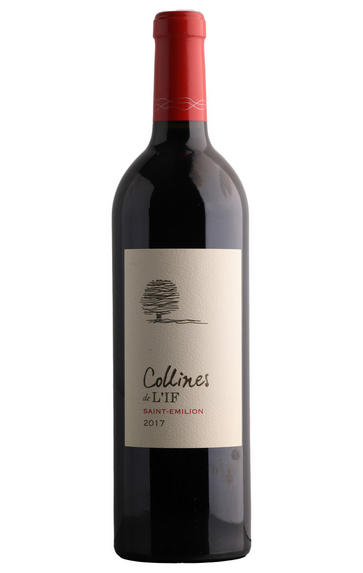
2017 Collines de L'If, St Emilion, Bordeaux
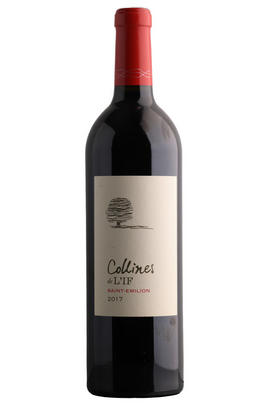
Critics reviews
New to Berry Bros & Rudd for autumn/winter, L'If is a small St-Emilion estate owned by Jacques Thienpont, best known for Pomerol's Le Pin. Collines de L'If is the estate's second wine and it makes an assured debut with its inaugural 2017 vintage. Harmonious aromas of blackberries, plums and cherries, with glimmers of savoury spice and dark chocolate. The poised palate is elegantly structured with fine tannins and a good depth of red and black fruit, leading to a lingering savoury finish. Decant before serving.
Drink 2023 - 2025
Julie Sheppard, Decanter.com (September 2023)
About this WINE
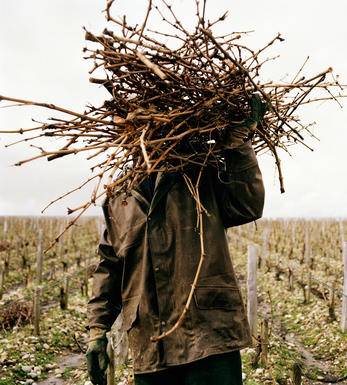
L'If
Located in the St Émilion appellation, which is renowned for its limestone-rich soils, L'If is owned by Jacques Thienpont, the owner of Château Le Pin, another highly esteemed Bordeaux estate. The estate is relatively new, established in 2006, and is situated on a small, 3.5-hectare vineyard.
The vineyard is planted with a mix of Merlot, Cabernet Franc, and Cabernet Sauvignon grapes, with an emphasis on Merlot. L'If follows a traditional winemaking approach, focusing on minimal intervention and allowing the grapes to express their natural characteristics. The grapes are hand-harvested and carefully sorted before fermentation. The wines are aged in French oak barrels, which adds complexity and structure to the final product.
L'If produces a limited range of wines, including a flagship red wine made from a blend of Merlot and Cabernet Franc grapes, typically displaying rich fruit flavours, fine tannins, and a long, lingering finish.
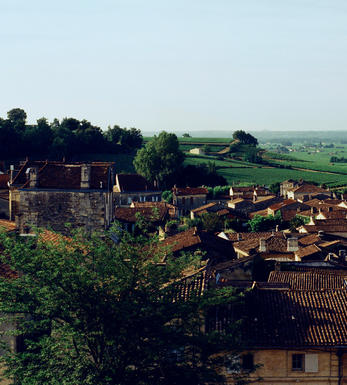
St Émilion
St Émilion is one of Bordeaux's largest producing appellations, producing more wine than Listrac, Moulis, St Estèphe, Pauillac, St Julien and Margaux put together. St Emilion has been producing wine for longer than the Médoc but its lack of accessibility to Bordeaux's port and market-restricted exports to mainland Europe meant the region initially did not enjoy the commercial success that funded the great châteaux of the Left Bank.
St Émilion itself is the prettiest of Bordeaux's wine towns, perched on top of the steep limestone slopes upon which many of the region's finest vineyards are situated. However, more than half of the appellation's vineyards lie on the plain between the town and the Dordogne River on sandy, alluvial soils with a sprinkling of gravel.
Further diversity is added by a small, complex gravel bed to the north-east of the region on the border with Pomerol. Atypically for St Émilion, this allows Cabernet Franc and, to a lesser extent, Cabernet Sauvignon to prosper and defines the personality of the great wines such as Ch. Cheval Blanc.
In the early 1990s there was an explosion of experimentation and evolution, leading to the rise of the garagistes, producers of deeply-concentrated wines made in very small quantities and offered at high prices. The appellation is also surrounded by four satellite appellations, Montagne, Lussac, Puisseguin and St. Georges, which enjoy a family similarity but not the complexity of the best wines.
St Émilion was first officially classified in 1954, and is the most meritocratic classification system in Bordeaux, as it is regularly amended. The most recent revision of the classification was in 2012
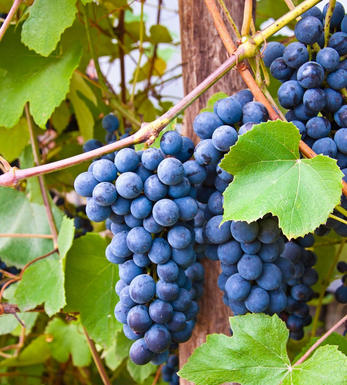
Merlot/Cabernet Franc
Merlot and Cabernet Franc are grape varieties commonly used in Bordeaux-style blends, particularly in the Bordeaux region of France. When these two grapes are blended, they can create a wine that combines the best characteristics of each variety.
Merlot is known for its smoothness, soft tannins, and ripe fruit flavours. It often contributes black cherry, plum, and chocolate flavours to the blend. The grapes are relatively easy to grow and ripen earlier than other Bordeaux varieties, making them versatile for blending.
Cabernet Franc, on the other hand, adds structure, depth, and complexity to the blend. It typically brings aromas of red fruits such as raspberry and strawberry, along with herbal notes like bell pepper and tobacco. These grapes have thinner skins and can be more challenging to cultivate, requiring specific growing conditions to reach their full potential.
When Merlot and Cabernet Franc are combined, the result is a well-balanced wine with various flavours and aromas. The blend often exhibits a Bordeaux wine's medium to full body, along with a smooth texture and moderate tannins. The specific flavour profile can vary depending on the proportions of each grape in the blend and the terroir and winemaking techniques employed.


Buying options
Add to wishlist
Description
L’If is a small St Emilion property owned by Jacques Thienpont – best known for Pomerol’s Le Pin. Collines de L’If is the second wine here and 2017 is its first vintage. The nose entices with black plums, cherries and blueberries, with hints of dark chocolate and clove spice behind. The same flavours come through on the palate, supported by harmonious tannins and a long, savoury finish. Decant it for an hour and enjoy with a mushroom or beef wellington.
Drink now to 2025
Berry Bros. & Rudd
wine at a glance
Delivery and quality guarantee